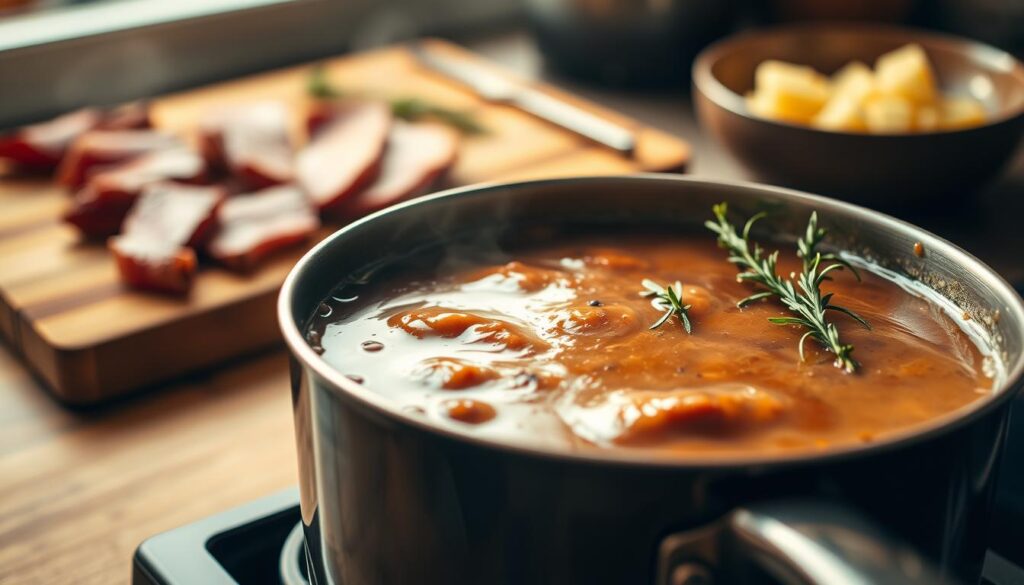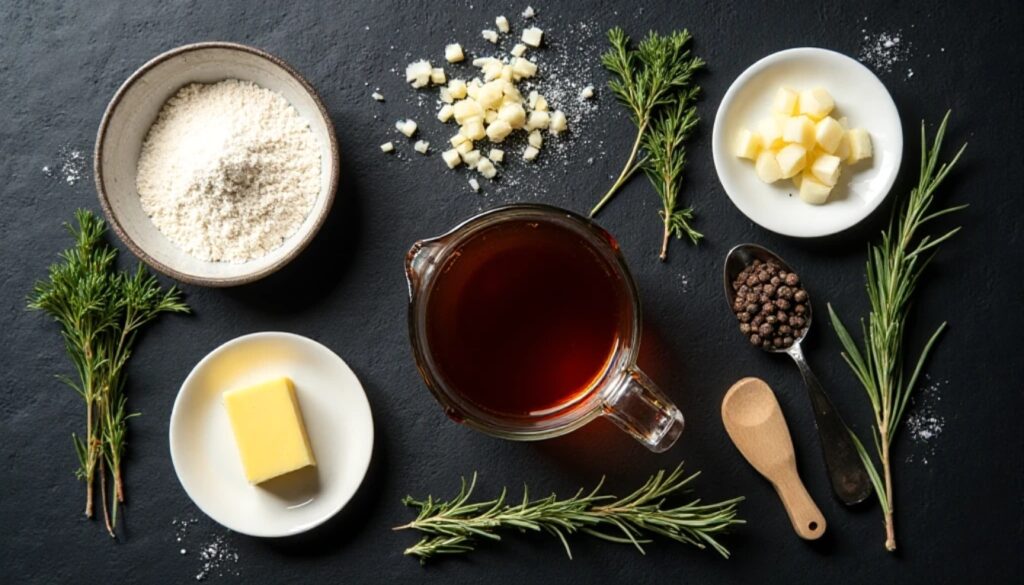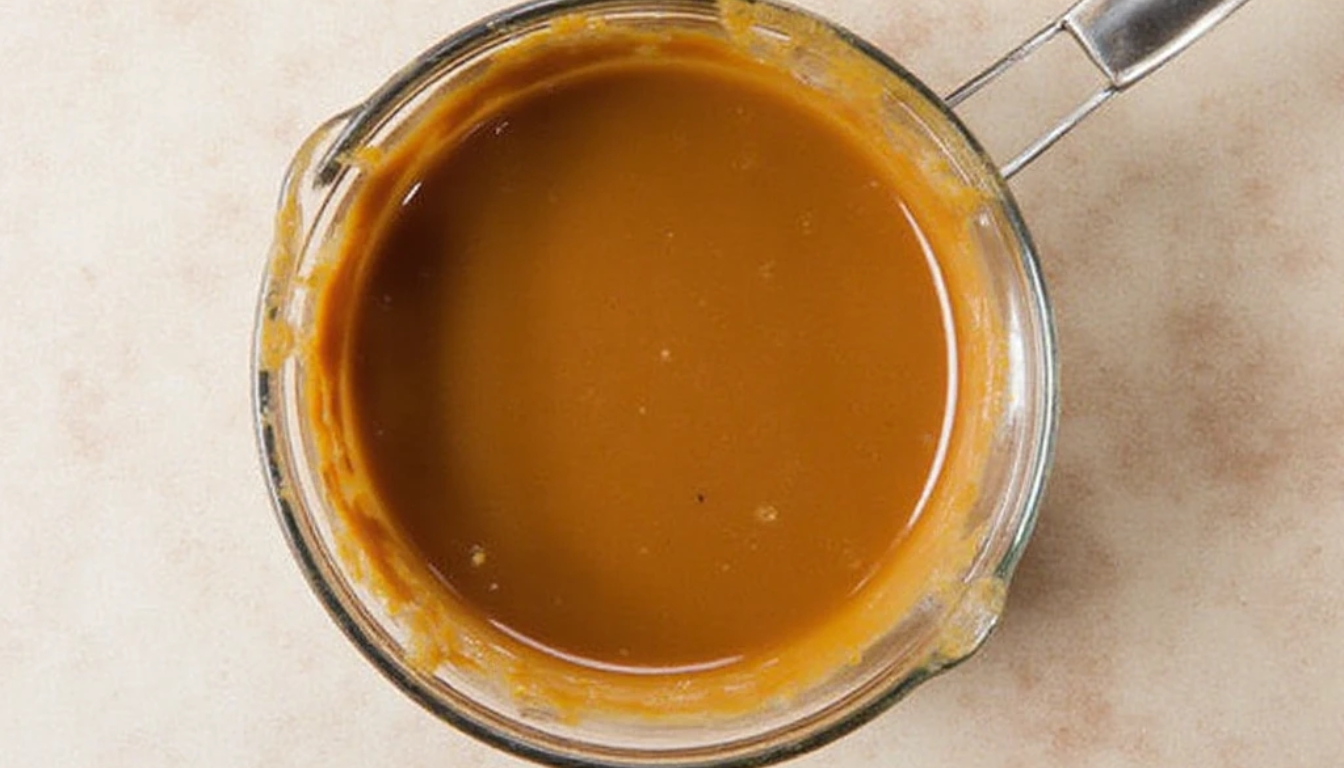Every Sunday dinner at my grandmother’s house was special. But nothing was as magical as when she poured her rich, velvety beef gravy over the meat. The smell of it filled the kitchen, making everyone excited to eat.
Now, I want to share a homemade beef gravy recipe that brings back those warm feelings. It’s not just about cooking. It’s about making meals that people will remember.
Whether you’re new to cooking or have been doing it for years, this homemade beef gravy will impress. It’s a secret ingredient that makes any dish better.
Table of Contents
Understanding the Basics of Homemade Beef Gravy
Making easy beef broth gravy at home is easier than you think. Learning to make beef gravy from scratch boosts your cooking skills. It turns simple meals into special dining moments.

Before starting, it’s key to know the basics and what you need. Making great gravy at home requires just a few tools and basic cooking skills.
Essential Equipment Needed
- Medium-sized saucepan
- Whisk
- Measuring cups
- Wooden spoon
- Measuring spoons
Key Benefits of Making Gravy From Scratch
Homemade beef gravy has many perks over store-bought:
- Complete ingredient control
- Fresh, robust flavor profile
- Less preservatives and additives
- Customizable seasoning
- Cost-effective solution
Time and Preparation Overview
Your homemade beef broth gravy is quick to make. Most can finish it in 8-10 minutes. It’s perfect for cooks of all levels.
With the right steps, you can turn simple ingredients into a delicious sauce. It’s great with many dishes.
Essential Ingredients for Perfect Beef Gravy Recipe

Making a traditional beef gravy recipe begins with picking the right ingredients. The quality of your gravy depends on the ingredients you choose. They should work together to create rich, deep flavors.
The best pan drippings gravy starts with a few key ingredients:
- Butter: Provides a rich, creamy base for your gravy
- All-purpose flour: Essential for thickening and creating a smooth texture
- Beef drippings or beef bouillon: Delivers intense meat flavor
- Onion: Adds depth and subtle sweetness
- Water or beef broth: Helps achieve the perfect consistency
When picking ingredients for your traditional beef gravy recipe, choose fresh and high-quality ones. Grass-fed beef drippings give a more robust flavor than store-bought ones. The right mix of ingredients turns a simple sauce into a delicious side dish that makes your meal better.
Professional chefs say using fresh, high-quality ingredients makes your gravy stand out. Try different types of butter or homemade beef stock to make a unique flavor. This will impress your dinner guests.
The Role of Fat and Flour in Creating Rich Gravy
Creating a savory brown gravy is all about the mix of fat and flour. This combo is key to making beef gravy thick and flavorful.
The secret to great gravy is the roux. A roux is just fat and flour mixed together. It thickens your sauce, making it rich and velvety.
Understanding the Perfect Roux Ratio
The classic roux ratio is simple:
- 2 tablespoons of fat
- 2 tablespoons of flour
- 2 cups of liquid (drippings, stock, or broth)
Choosing the Right Type of Fat
| Fat Type | Flavor Profile | Best Used For |
|---|---|---|
| Butter | Rich, creamy | Lighter meat gravies |
| Beef Drippings | Intense, meaty | Beef and roast gravies |
| Olive Oil | Subtle, smooth | Vegetarian options |
Flour Options and Their Effects
Different flours can change your gravy’s taste and texture. All-purpose flour is good for most recipes. Rice flour is a gluten-free option that makes gravy silky.
Choose your ingredients wisely, whisk well, and you’ll make a gravy that wows your guests.
Step-by-Step Beef Gravy Recipe
Making a tasty beef gravy is simple. Just a few ingredients and basic steps can make a flavorful gravy. It’s perfect for any meal.
- Melt 4 tablespoons of butter in a heavy-bottomed skillet over medium heat
- Gradually whisk in 4 tablespoons of all-purpose flour to create a smooth roux
- Add finely chopped onions and cook until they become translucent
- Slowly pour in 2 cups of warm beef broth, stirring continuously
- Sprinkle in beef bouillon powder for extra depth of flavor
- Bring the mixture to a gentle boil
- Reduce heat and simmer until the gravy reaches desired thickness
Patience and constant stirring are key to a great beef gravy. Avoid high heat to prevent burning or lumps.
| Ingredient | Quantity | Purpose |
|---|---|---|
| Butter | 4 tbsp | Creates rich base |
| All-purpose flour | 4 tbsp | Thickening agent |
| Beef broth | 2 cups | Primary liquid |
| Beef bouillon | 1-2 tsp | Enhances flavor |
Pro tip: Season your beef gravy with salt and black pepper to taste. If it’s too thick, add more broth. If too thin, simmer longer.
Using Beef Drippings vs. Beef Broth
Making the best homemade beef gravy starts with knowing the difference between beef drippings and broth. Your choice of liquid greatly affects the gravy’s taste and richness.
When making the best pan drippings gravy, you have two main choices for the liquid base. Each option adds its own special touch to your sauce.
Collecting and Maximizing Meat Drippings
Meat drippings are the key to authentic flavor in homemade beef gravy. To get these juices:
- Place a roasting pan under your meat while cooking
- Let fat and liquid build up during roasting
- Strain drippings to remove solids
- Separate fat from liquid for the right gravy consistency
Selecting Quality Beef Broth
If you don’t have enough drippings, use high-quality beef broth as your base. Look for these qualities:
| Broth Quality Factors | Recommended Characteristics |
|---|---|
| Sodium Content | Low to moderate |
| Ingredient List | Minimal processed ingredients |
| Preparation Style | Bone broth for deeper flavor |
Pro tip: Bone broth makes your homemade beef gravy taste like it’s from a restaurant.
Mastering the Art of Gravy Thickness
Learning how to thicken beef gravy can make any meal special. The right consistency is key to a tasty sauce that goes well with your main dish. Whether it’s a simple beef broth gravy or a complex recipe, knowing how to adjust the thickness is essential.
To get the perfect gravy thickness, you need to know a few techniques:
- Use cornstarch for a quick thickening solution
- Create a roux with flour and fat
- Gradually add thickening agents to prevent lumps
- Adjust liquid content for desired consistency
If your gravy is too thin, don’t worry. Cornstarch slurry is a great fix. Mix one tablespoon of cornstarch with cold water, then slowly whisk it into your simmering gravy. This way, you avoid lumps and get a smooth gravy.
For those who like using flour, making a roux is a good option. Take a bit of hot gravy out, mix in flour until it’s smooth, then add it back to the pot. Let it simmer for a few minutes to get rid of any raw flour taste and achieve the right thickness.
Pro tip: Always add thickening agents slowly and stir constantly. This keeps your gravy smooth and prevents clumps. It will make your dish go from good to great.
Common Mistakes to Avoid When Making Beef Gravy
Making beef gravy can be tricky. But knowing common mistakes helps you make smooth, tasty gravy. Even skilled cooks face challenges when making beef gravy from scratch.
Perfect gravy needs attention to detail and key techniques. Let’s look at common mistakes and how to fix them.
Preventing Lumpy Gravy
Lumpy gravy can spoil a great meal. To avoid it, follow these important steps:
- Whisk continuously while adding liquid
- Use warm or hot liquid when mixing
- Strain the gravy if small lumps develop
- Gradually add flour to prevent clumping
Resolving Consistency Problems
The right thickness is key for perfect gravy. If your gravy is too thin or thick, try these fixes:
- For thin gravy: Make a cornstarch slurry by mixing cornstarch with cold water
- For thick gravy: Slowly whisk in more beef broth
- Simmer the gravy to reduce and thicken naturally
Pro tip: Always taste and adjust seasoning after changing your gravy’s consistency. Salt and pepper can help balance flavors during troubleshooting.
Flavor Enhancements and Seasoning Tips
To make your savory brown gravy truly stand out, focus on seasoning. The right mix of herbs and spices can take your flavorful beef stock gravy to the next level.
- Fresh herbs like thyme and rosemary for depth
- Cracked black pepper for warmth
- A dash of Worcerstershire sauce for umami complexity
- Smoked paprika for subtle smokiness
Customize your gravy’s flavor with these seasoning tips. Follow these pro tips for a robust and memorable sauce:
| Ingredient | Flavor Impact | Recommended Quantity |
|---|---|---|
| Fresh Thyme | Earthy, herbal notes | 1-2 sprigs |
| Worcerstershire Sauce | Deep umami flavor | 1-2 teaspoons |
| Black Pepper | Warm, spicy undertone | 1/2 teaspoon |
Try these seasonings to make a gravy that suits your taste. Remember, balance is everything. Start with small amounts and adjust to taste.
Storage and Reheating Guidelines
Keeping your homemade beef gravy tasty means storing and reheating it right. Whether you made it fresh or have leftovers, knowing how to do this will keep it great.
Storing your beef gravy right keeps it safe and fresh longer. Here are key tips to keep your homemade gravy delicious:
Refrigeration Techniques
- Cool the gravy completely before storing
- Transfer to an airtight container
- Store in the refrigerator for up to 4 days
- Place a layer of plastic wrap directly on the gravy surface to prevent skin formation
Freezing Your Beef Gravy
- Freeze in freezer-safe containers
- Leave about 1/2 inch of space for expansion
- Label with the date of preparation
- Frozen homemade beef gravy can last up to 4-6 months
Reheating Best Practices
When reheating your beef gravy, use gentle methods to keep it smooth:
- Thaw frozen gravy in the refrigerator overnight
- Reheat on the stovetop over low heat
- Stir frequently to prevent burning
- Add a small amount of broth or water if the gravy becomes too thick
Pro tip: Always reheat gravy to an internal temperature of 165°F to ensure food safety.
Conclusion
Making beef gravy from scratch is easier than you think. You’ll turn simple meals into special occasions. With time, you’ll get better at making a rich, tasty gravy that makes every meal better.
Learning to make easy beef broth gravy is a journey. It’s about mastering techniques, choosing the right ingredients, and trying new things. Each time you make gravy, you’ll get better, creating a unique flavor that shows off your cooking skills.
Your homemade beef gravy is far better than store-bought. You can adjust the flavors to match your taste, making it perfect for many dishes. Enjoy the process, trust your taste, and relish the tasty outcome of your cooking journey.
Cooking is all about exploring and loving what you do. With these tips, you’ll become great at making gravy that wows everyone. Keep trying, stay open to new ideas, and make your kitchen a place of tasty adventures.
Tried Our Recipe Yet?
There are no reviews yet. Be the first one to write one.

